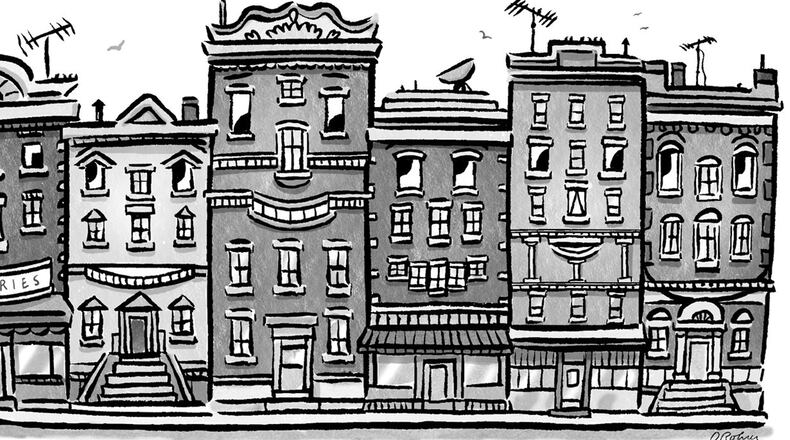For many, it’s harder than ever to buy a first home in the United States.
The median sale price for a home has been climbing steadily for nearly a decade and hit record highs last year, according to the National Association of Realtors.
To ease pressure on prices, according to Freddie Mac economists, the U.S. needs another nearly four million homes — an injection of supply to meet the growing demand.
Yet, throughout most of the United States, local rules stipulate how many new homes can be built on a property. And for many properties – even in cities – those rules come down to the loneliest number: one.
Some cities are trying to change that.
Credit: contributed
Credit: contributed
In 2018, the Minneapolis City Council approved a plan that captured headlines around the world. Minneapolis voted, in effect, to end single-family zoning, the common land-use regulation that keeps apartment buildings and multi-family dwellings out of certain neighborhoods.
The city’s new rules would allow two- and three-family houses to be built in any part of the city, even in neighborhoods where they had previously been illegal.
Minneapolis’s decision – the first of its kind on a citywide level anywhere in the United States – took aim at what has often been portrayed as the quintessential American dwelling.
In recent years, the single-family house that sits alone on its own property has attracted fresh scrutiny for its physical and societal consequences.
Single-family zoning limits how much new housing that can be built, which drives up prices in in-demand neighborhoods. And it contributes to suburban sprawl, which carries all sorts of environmental impacts.
The rules allowing duplexes and triplexes on every property in Minneapolis went into effect at the beginning of 2020.
During the first two years after the zoning rules were changed, 59 new duplexes and 15 new triplexes were permitted, according to data provided by city officials. Of these, 30 duplexes and three triplexes were permitted in areas where they weren’t previously allowed.
It remains to be seen whether this pace will accelerate. Just like many home-building markets, Minneapolis is feeling the strain of supply chain kinks and labor shortages. Remote work and other economic forces are changing once-predictable migration patterns. It’s a strange time to be evaluating any kind of new housing policy.
But what is clear is that Minneapolis’s ban on single-use zoning is part of a growing movement, with more states and cities parting ways with a type of land use that has long held back density and diversity.
In 2019, Oregon, for instance, passed a law allowing additional units to be built on lots zoned for single-family homes in most of its cities. Its biggest city, Portland, implemented its own rules the following year.
California, which has one of the worst housing shortages in the country, moved to eliminate single-family restrictions last year, after several of its cities had passed similar laws of their own.
The motives behind these decisions are varied. They seek to increase housing supply, promote racial equity and protect the natural environment from sprawl.
Though the number of jurisdictions that have eliminated single-family zoning is still small, Lydia Lo, a research associate in the Metropolitan Housing and Communities Policy Center at the Urban Institute, said it is “absolutely a trend,” and one with broad appeal across the political spectrum in the United States.
“It is a trend that we’re going to continue to see happen,” said Lo.
Andrea Brennan, the director of community planning and economic development in Minneapolis, said the goal of the zoning changes was to allow more housing options in the most exclusive areas.
Perhaps predictably, this led to an outcry from certain homeowners in these areas.
But as Brennan pointed out, the law by no means prohibits single-family homes – if anything, it empowers the free market, opening the door to any kind of housing that meets local demand.
Minneapolis officials acknowledged that eliminating single-family restrictions has had modest impacts so far.
But over the course of the 20-year plan, they said, it could still produce hundreds of new housing units that otherwise wouldn’t have been built in low-density neighborhoods. And it’s only one aspect of the comprehensive plan that’s aimed at making housing more affordable.
Cities are continuing to experiment with policies that permit more housing in hopes of bringing costs down and making it more accessible, even when they stop short of eliminating single-family zoning altogether.
Massachusetts, for example, is currently implementing rules that require cities to allow multifamily housing in areas near transit stations. Connecticut passed a law last year allowing accessory dwelling units, also known as backyard flats or “granny pods,” on many single-family lots. And the Biden administration has floated several policy proposals that would create incentives for cities that permit more housing density as well.
There are good reasons to allow more housing in single-family zoned areas, and few good reasons not to, Lo said.
If nothing else, the new laws will provide lots of new opportunities to study the effects of zoning changes on housing supply and housing costs.
Jared Brey writes for Reasons to Be Cheerful, a nonprofit editorial project that bills itself as a tonic for tumultuous times.
About the Solutions Journalism Network
This story comes from our partners at the Solutions Journalism Network, a nonprofit organization dedicated to rigorous reporting about social issues.
GEORGIA ANGLE
Metro Atlanta lost nearly 60,000 housing units renting for less than $1,250 per month over just a five-year span before the pandemic hit, according to recent analysis by the Atlanta Regional Commission.
Those units would be affordable for someone making roughly $45,000, according to Mike Carnathan, ARC’s research and analytics division manager.
He pointed out that the supply of new housing in Atlanta — especially affordable housing — is not keeping up with demand as the region’s population soars.
About the Author
Keep Reading
The Latest
Featured




